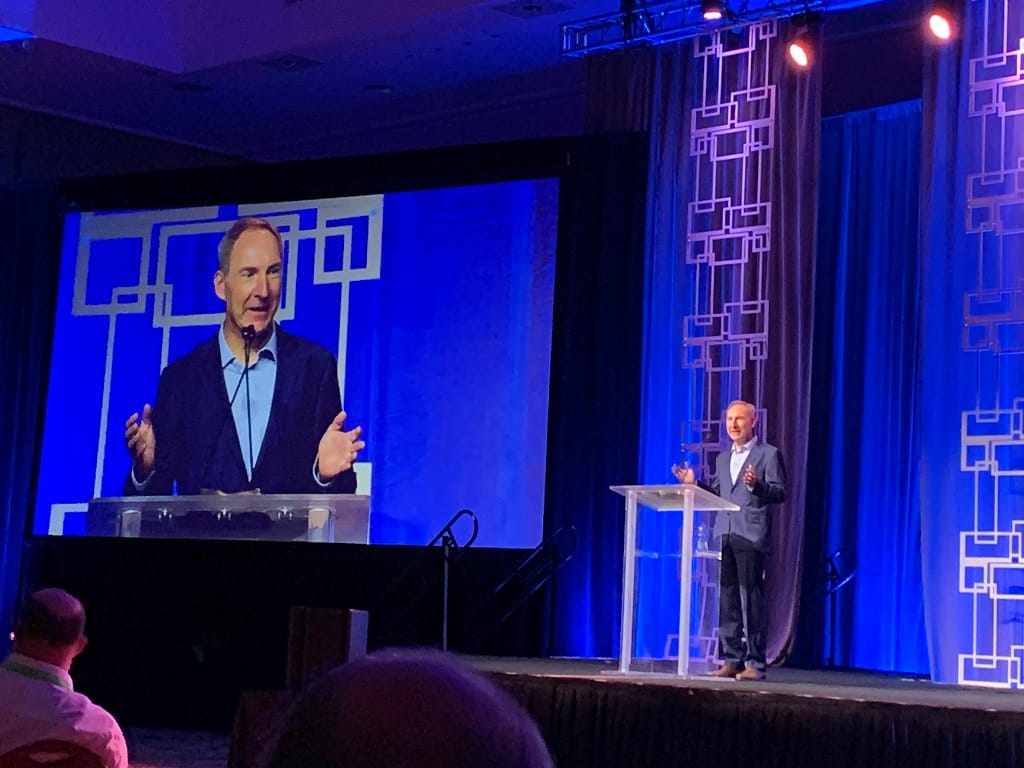Experts Disagree Over How Broadband Rollout Should be Handled with New Federal Dollars
Gary Bolton and Nicol Turner Lee debated technology use to tackle the digital divide.
Benjamin Kahn

WASHINGTON, December 15, 2021 – Some experts remain divided over how to prioritize which communities on the wrong side of the digital divide, including who should be served first and with which technologies.
CEO and President of the Fiber Broadband Association Gary Bolton has long maintained that fiberoptic technology is the only method of deploying broadband to sufficiently address the question of need and access in American communities.
During FBA’s “Fiber for Breakfast” podcast on Wednesday, Nicol Turner Lee, senior fellow of Brookings Institutions’ governance studies and director of the Center for Technology Innovation, stated that every method of broadband deployment should be considered when attempting to bridge the digital divide. Bolton called the sentiment “nails on a chalkboard.”
“The old argument is that we should spread our funding like peanut butter and make sure that everybody has some kind of solution,” said Bolton. “We will never have the opportunity for investment that we have right in front of us – to be able to make sure that urban and rural areas do not get a second rat solution.”
He compared today’s efforts to connect the country to power grids in the 20th Century. “If you have power, you should be able to have fiber.”
Lee pushed back against the notion that fiber should be the first or only choice. “I think that we have the capacity in some rural areas to do the spread and depth of 5G wireless or any type of fixed wireless solution,” she said. “I think that we have the opportunity in urban areas to use cable.”
When referring to underserved people who are trying to improve their existing broadband infrastructure, Lee said they were not her priority. “I do not really care about those people,” she said. “I care about those kids who did not have the chance to get online for school because they had no solution.”
“I think the marketplace is now demonstrating that, yes, we need fiber to propagate any [wireless] signal that we are talking about,” she continued, “We also need to make sure that we are solving the [people with the] least first.”
“If we go about serving those that have access or have the ability to have access [the internet], so that they can do more, we are not solving the digital divide,” Lee said.
Bolton was quick to respond, pointing out that much of the wireless infrastructure Lee was referring to would require fiber to support it anyway. “Fixed wireless requires fiber all the way to the line of sight. So, all these things require robust fiber,” he said. “If you’re pulling fiber, there should be no circumstances where we don’t pull fiber to every American.”
A similar debate emerged during Fierce Telecom’s Digital Divide Summit this week, with experts debating whether the billions coming from the Infrastructure Investment and Jobs Act should go toward fiber or a mix of that and other technologies.
Lee’s upcoming book “Digitally Invisible: How the Internet is Creating the New Underclass” is slated to hit the shelves in 2022.









Member discussion